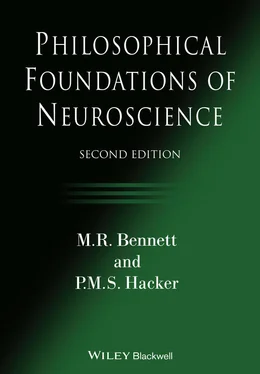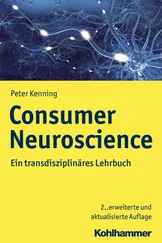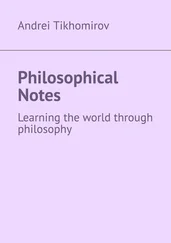Cognitive neuroscience operates across the boundary between two fields, neurophysiology and psychology, the respective concepts of which are categorially dissimilar. The logical or conceptual relations between the physiological and the psychological are problematic. Numerous psychological concepts and categories of concepts are difficult to bring into sharp focus. The relations between the mind and the brain, and between the psychological and the behavioural, are bewildering. Puzzlement concerning these concepts and their articulations, and concerning these apparent ‘domains’ and their relations, has characterized neurophysiology since its inception (we shall begin our investigations in chapter 1with a historical survey of the early development of neuroscience). In spite of the great advances in neuroscience at the beginning of the twentieth century at the hands of Charles Sherrington, the battery of conceptual questions popularly known as the mind–body or mind–brain problem remained as intractable as ever – as is evident in the flawed Cartesian views embraced by Sherrington and by such of his colleagues and protégés as Edgar Adrian, John Eccles and Wilder Penfield. Brilliant though their work unquestionably was, deep conceptual confusions remained – as we show in chapter 2. Whether the current generation of neuroscientists has successfully overcome the conceptual confusions of earlier generations, or whether it has merely replaced one conceptual entanglement by others, is the subject of our investigation in this book.
One such tangle is evident in the persistent ascription of psychological attributes to the brain. For, while Sherrington and his protégés ascribed psychological attributes to the mind (conceived as a peculiar, perhaps immaterial, substance distinct from the brain), contemporary neuroscientists tend to ascribe the same range of psychological attributes to the brain (commonly, although not uniformly, conceived to be identical with the mind). But the mind, we argue (§3.10), is neither a substance distinct from the brain nor a substance identical with the brain. And we demonstrate that ascription of psychological attributes to the brain is incoherent ( chapter 3). Human beings possess a wide range of psychological powers, which are exercised in the circumstances of life, when we perceive, think and reason, feel emotions, want things, form plans and make decisions. The possession and exercise of such powers define us as the kinds of animals we are. We may enquire into the neural conditions and concomitants for their possession and exercise. This is the task of neuroscience, which is discovering more and more about them. But its discoveries in no way affect the conceptual truth that these powers and their exercise in perception, thought and feeling are attributes of human beings , not of their parts – in particular, not of their brains . A human being is a psychophysical unity, an animal that can perceive, act intentionally, reason and feel emotions, a language-using animal that is not merely conscious, but also self-conscious – not a brain embedded in the skull of a body. Sherrington, Eccles and Penfield conceived of human beings as animals in whom the mind, which they thought of as the bearer of psychological attributes, is in liaison with the brain. It is no advance over that misconception to suppose that the brain is a bearer of psychological attributes.
Talk of the brain’ s perceiving, thinking, guessing or believing, or of one hemisphere of the brain’ s knowing things of which the other hemisphere is ignorant, is widespread among contemporary neuroscientists. This is sometimes defended as being no more than a trivial façon de parler . But that is quite mistaken. For the characteristic form of explanation in contemporary cognitive neuroscience consists in ascribing psychological attributes to the brain and its parts in order to explain the possession of psychological attributes and the exercise (and deficiencies in the exercise) of cognitive powers by human beings.
The ascription of psychological – in particular, cognitive and cogitative – attributes to the brain is, we show, also a source of much further confusion. Neuroscience can investigate the neural conditions and concomitants of the acquisition, possession and exercise of sentient powers by animals. It can discover the neural preconditions for the possibility of the exercise of distinctively human powers of thought and reasoning, of articulate memory and imagination, of emotion and volition. This it can do by patient inductive correlation between neural phenomena and the possession and exercise of psychological powers, and between neural damage and deficiencies in normal mental functions. What it cannot do is replace the wide range of ordinary psychological explanations of human activities in terms of reasons, intentions, purposes, goals, values, rules and conventions by neurological explanations (reductionism is discussed in chapter 13[16]). And it cannot explain how an animal perceives or thinks by reference to the brain’ s, or some part of the brain’ s, perceiving or thinking. For it makes no sense to ascribe such psychological attributes to anything less than the animal as a whole. It is the animal that perceives, not parts of its brain, and it is human beings who think and reason, not their brains. The brain and its activities make it possible for us – not for it – to perceive and think, to feel emotions, and to form and pursue projects.
While the initial response of many neuroscientists to the accusation of conceptual confusion is to claim that the ascription of psychological predicates to the brain is a mere façon de parler , their reaction to the demonstrable fact that their explanatory theories nontrivially ascribe psychological powers to the brain is sometimes to suggest that this error is unavoidable due to the deficiencies of language. We confront this misconception in chapter 14, where we show that the great discoveries of neuroscience do not require this misconceived form of explanation – that what has been discovered can readily be described and explained in our existing language. We demonstrate this by reference to the much discussed phenomena resultant upon commissurotomy, described (or, we suggest, misdescribed) by Sperry, Gazzaniga and others (§14.3 [§17.3]).
In Part IIwe investigate the use of concepts of perception, memory, mental imagery, emotion and volition in current neuroscientific theorizing. From case to case we show that conceptual unclarity – failure to give adequate attention to the relevant conceptual structures – has often been the source of theoretical error and the grounds for misguided inferences. It is an error, a conceptual error, to suppose that perception is a matter of apprehending an image in the mind (Crick, Damasio, Edelman), or the production of a hypothesis (Helmholtz, Gregory), or the generation of a 3-D model description (Marr). It is confused – a conceptual confusion – to formulate the binding problem as the problem of combining data of shape, colour and motion to form the image of the object perceived (Crick, Kandel, Wurtz). It is wrong, conceptually wrong, to suppose that memory is always of the past, or to think that memories can be stored in the brain in the form of the strength of synaptic connections ( Kandel, Squire, Bennett). And it is mistaken, conceptually mistaken, to suppose that the investigation of thirst, hunger and lust is an investigation into the emotions ( Rolls) or to think that the function of the emotions is to inform us of our visceral and musculoskeletal state ( Damasio).
The initial reaction to such critical remarks may well be indignation and incredulity. How can a flourishing science be fundamentally in error? How could there be unavoidable conceptual confusion in a well-established science? Surely, if there are problematic concepts, they can easily be replaced by others that are unproblematic and that serve the same explanatory purposes. Such responses betoken a poor understanding of the relation between form of representation and facts represented, and a misunderstanding of the nature of conceptual error. They also betray ignorance of the history of science in general, and of neuroscience in particular.
Читать дальше












